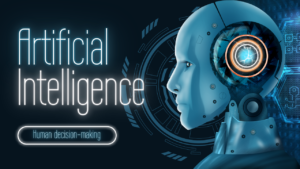
Artificial intelligence is revolutionizing the banking industry, impacting both traditional banks and neobanks. The shift from traditional, data-driven AI to sophisticated, generative AI is ushering in unprecedented levels of efficiency and client engagement in banking.
What is AI in banking?
In the banking sector, artificial intelligence (AI)involves the application of sophisticated technologies and algorithms to enhance and streamline various banking functions and services. AI includes methods like machine learning, natural language processing, and data analytics to boost operational efficiency, manage risks, improve customer service, and support decision-making. By processing and analyzing large volumes of data, AI enables banks to detect fraud, tailor services to individual needs, automate routine tasks, and gain valuable insights for better business performance and customer satisfaction.
The Evolution of AI in Banking
AI in banking began with task automation and data analysis but has evolved to advanced applications in risk management, fraud prevention, and personalized customer service. Generative AI, capable of creating and predicting from large datasets, promises to further transform banking operations.
· Initial Automation and Data Analysis (Pre-2010s):
Early Automation: Banks started using AI to automate simple tasks like transaction processing and administrative duties.
Basic Data Analysis: AI tools were used for fundamental data analysis to understand customer behavior and transaction trends.
· Improved Risk Management and Fraud Detection (2010s):
Advanced Analytics: AI provided enhanced analytical capabilities, helping banks predict financial trends and assess credit risks.
Fraud Detection: AI systems began detecting fraudulent activities by analyzing transaction patterns and identifying anomalies in real time.
· Personalized Services and Customer Engagement (Mid-2010s to Early 2020s):
Chatbots and Assistants: The introduction of AI-powered chatbots improved customer service by offering around-the-clock support and handling routine tasks.
Customization: AI started to tailor financial products and services to individual customer preferences, enhancing the overall customer experience.
· Generative AI and Advanced Solutions (Early 2020s to Present):
Generative AI: This technology allows banks to make predictions and generate insights based on large data sets, improving financial forecasting and personalized advice.
Risk and Compliance: AI now handles more complex risk scenarios and ensures regulatory compliance with better accuracy.
· Future Developments :
Innovation: Banks are exploring new AI-driven innovations, such as autonomous financial advisors and advanced predictive models.
Ethical and Regulatory Focus: There is a growing emphasis on ethical AI use and adhering to regulations to ensure transparency and maintain customer trust.
In essence, AI in banking has progressed from basic automation to sophisticated applications that enhance efficiency, manage risks, and improve customer interactions.
Examples of AI in banking
Those are great examples of how AI is transforming the banking industry! Here’s a bit more detail on each of those cases:
· Citibank: They’ve implemented AI to handle routine tasks behind the scenes. AI helps process loans, check documents, and detect fraud automatically, which makes things faster and more accurate.
· JPMorgan Chase: They’re using AI to spot and stop fraudulent transactions in real time. The system looks at lots of data from transactions, customer behavior, and devices to catch suspicious activities quickly.
· Bank of America: They use AI to make banking more personal. Their system recommends products and services based on what each customer needs and prefers, helping customers find what’s best for them.
· Reddepayments: They used AI to become the newest and fastest growing payment providers today. Recently named “Best Payment Provider for Flat Rate Pricing” by CreditCards.com they’ve grown from a small office to a noteworthy provider…Continue reading
The Future of Banking Shaped By AI
The future of AI in banking promises significant advancements but will require careful management of associated risks and challenges.It can be characterized by several key trends:
Define the AI governance and risk profile for the bank:
Each bank must tailor its approach to AI risk and deployment based on its unique circumstances. Banks should integrate AI with the understanding that it necessitates robust security measures to mitigate potential risks.
Prioritize use cases:
AI initiatives should be closely linked to specific business cases that deliver measurable results and align with organizational objectives. Examples include customer service chatbots, personalized investment strategies, fraud detection, and credit scoring.
Select a reliable AI platform:
Effective enterprise AI strategies often involve using multiple AI models. Banks must decide whether to utilize open-source models, develop their own, or use a combination of both.
Adopt a hybrid cloud architecture:
To address technology inefficiencies and manage application resources effectively, banks should employ a hybrid cloud approach. This allows them to leverage both public and private clouds, enhancing resilience and responsiveness for real-time digital banking.
Learn from initial implementations:
To manage risks, banks should start with small-scale pilots and use cases to evaluate impacts before broader deployment. Insights gained from these early tests are crucial for understanding necessary infrastructure and adjustments.
Establish an “AI factory”:
After developing a viable AI strategy for specific use cases, banks should create a system that integrates AI into their operations, making it a core component of all development and business processes.
Benefits of AI in banking sector:
AI in the banking sector refers to the application of artificial intelligence technologies to improve various aspects of banking operations and customer experiences. Here is some key ways AI is utilized in banking:
1. Fraud Detection and Prevention: AI algorithms analyze transaction patterns and detect anomalies to identify and prevent fraudulent activities in real time.
2. Customer Service and Support: Chatbots and virtual assistants powered by AI handle customer inquiries, provide support, and perform tasks such as account management, helping banks offer 24/7 service.
3. Personalized Banking: AI tools analyze customer data to offer personalized financial advice, product recommendations, and tailored services based on individual preferences and behaviors.
4. Risk Management: AI models assess credit risk and financial stability by analyzing large datasets, improving the accuracy of risk assessments and decision-making processes.
5. Process Automation: Robotic Process Automation (RPA) and AI streamline repetitive tasks such as data entry, compliance checks, and document processing, increasing operational efficiency.
6. Predictive Analytics: AI uses historical data to forecast future trends, helping banks with strategic planning, investment decisions, and market analysis.
7. Algorithmic Trading: AI algorithms execute trades at optimal times based on market conditions and data analysis, enhancing trading strategies and outcomes.
8. Compliance and Regulation: AI assists in monitoring and ensuring compliance with regulations by analyzing transactions and detecting suspicious activities that could indicate regulatory breaches.
Overall, AI enhances the efficiency, security, and customer experience in the banking sector, driving innovation and transforming traditional banking practices.
Challenges to AI in banking
In the banking and finance sector, the adoption of AI is accelerating rapidly. However, while the industry eagerly embraces the vast opportunities AI offers, it remains acutely aware that this progress brings with it a range of challenges. Let’s explore the difficulties and complexities associated with integrating AI into the banking ecosystem.
1.Data Privacy and Security: Safeguarding sensitive customer data used by AI systems while adhering to privacy laws is a major challenge.
2. Regulatory Compliance: Banks must ensure their AI systems meet complex financial regulations and industry standards.
3. Bias and Fairness: AI can perpetuate biases in historical data, leading to unfair treatment in processes like loan approvals. Banks need to actively address and correct these biases.
4.Transparency and Explainability: AI systems can be difficult to understand, making it hard to explain their decisions. Banks must ensure AI decisions are clear and justifiable.
5. Integration with Legacy Systems: Connecting new AI technologies with outdated banking systems can be technically challenging and expensive.
6. Ethical Concerns: Using AI for financial decisions raises ethical questions about automation’s impact on human judgment and job roles.
7. Cost and Resources: Implementing AI involves significant investment in technology and talent, requiring banks to carefully manage these costs.
8. Accuracy and Reliability: AI models must be precise and dependable to avoid errors in financial operations and risk assessments. Continuous monitoring is essential.
9. Customer Trust and Adoption: Gaining customer trust in AI systems and ensuring they understand how these systems work is crucial for successful implementation.
10. Change Management: Introducing AI can disrupt existing workflows, so banks need effective strategies to manage this transition and address any resistance.
11. Skill Gaps: There’s a shortage of professionals with expertise in both AI and banking, so banks must invest in training and skill development.
Navigating these challenges is essential for banks to successfully implement AI while minimizing risks and enhancing benefits.
Conclusion
In summary, artificial intelligence is reshaping the banking industry in significant ways. By adopting AI technologies, banks are boosting their efficiency, enhancing customer interactions, and improving security. AI tools like chatbots and predictive analytics are making processes smoother and more personalized, while advanced algorithms help detect fraud and manage risks more effectively.
Nonetheless, the rise of AI brings challenges, such as concerns about data privacy and the need for strong cybersecurity. As the technology advances, banks must carefully navigate these issues to ensure both innovation and regulatory compliance.
Looking ahead, AI will play a pivotal role in the future of banking, driving technological progress and informed decision-making. Balancing these innovations with attention to potential risks will be crucial for creating a more effective and customer-focused banking experience.






